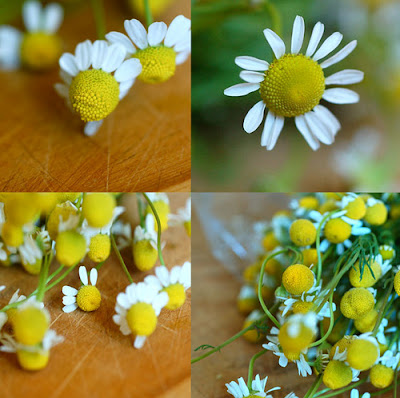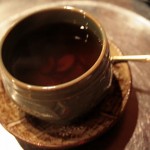What did the Mayans use for an enlarged prostate? How did Native Americans relieve bronchial congestion? Herbalism, or herbal medicine, has been overlooked during the twentieth century by many physicians and hospitals. But, new research, especially by the Mayo Clinic and other research facilities, show that some herbs hold their own as scientifically-sound remedies for many ills.
With that said, some — such as the plants in the nightshade family — might be avoided, especially for individuals who suffer from arthritis. And, some people might experience adverse affects from some herbs, just as they would from other manufactured medicines. Finally, mixing herbs and medications might not be a wise idea, so check with your doctor before you attempt to treat anything with herbs.
The following list is a small sample of some herbs that might help relieve some of your adverse symptoms. Some herbs are applied topically as poultices, and others are ingested as teas and tinctures. The list is in alphabetical order, and we tried to provide a variety of links to introduce you to new herbal information resources.
So These Are The 25 Proven Ancient Home Remedies With Science Behind Them
- Aloe: The clear gel within the leaves of this plant is a superior remedy for burns. Use it for thermal burns, sunburns or any skin irritation. Aloe Vera juice is intended for internal use, and its main use is to help heal ulcers and other intestinal irritations. The juice is not pleasant for the most part, but you only need a teaspoon after meals. Otherwise, the juice becomes a laxative.
- Black Cohosh : Also known as “Squawroot,” the root extract has been long known to eleviate menstrual cramps. Recent experiments suggest that the tea made from this root contains sedative and anti-inflammatory effects. Black cohosh is toxic in large doses, and pregnant women should avoid this herb.
- Blackberry Root : Blackberry root bark has been used as an herbal remedy for diarrhea. Users can find tinctures in health food stores. If so, then a teaspoon every two to four hours may do the trick.
- Cayenne: Christopher Columbus first introduced cayenne to the Old World and since then cayenne has become a culinary and medicinal staple. Cayenne has been known to relieve toothache, a digestive aid, and a way to alleviate pain as an ointment. Capsaicin is the ingredient of note, used externally to relieve arthritic pain.
- Chamomile: This tea is a great home remedy for upset stomachs as it can help relieve heartburn,
indigestion and colic. It also is a mild relaxant and sedative, good to drink before bedtime.
- Cinnamon: This herb will warm you up, as it promotes circulation. If you have a job where you need to sit all day long, use cinnamon tea to get you going rather than coffee.
- Comfrey: Use the root of this plant to make a poultice for wounds that never seem to heal, such as bed sores, brown recluse spider bites and diabetic ulcers. Once a day, mix powdered comfrey root with aloe vera gel to make a paste, pack it into the wound and cover with a bandage.
- Dandelion: Dandelion tea is used to help relieve kidney and liver disorders. It is not toxic, so no worries about overdosing.
- Echinacea: Antibiotic, antiviral and immune-enhancer. This native American plant is a fine first-line treatment for colds and flu. At the first sign of trouble, begin taking echinacea and continue until the illness runs its course. Children under 10 can take half the adult dosage.
- Eucalyptus: These evergreens are native to Australia, and the oils from the leaves have long been known to relieve chest congestion and bronchial problems. If you don”t like the eucalyptus teas, simply pour hot water over a few leaves and inhale the steam twice per day. Try sage teas for a sore throat.
- Evening Primrose Oil : This oil, along with black currant and borage oils contain a fatty acid called GLA (gamma linolenic acid). GLA is an effective anti-inflammatory agent with none of the side effects of anti-inflammatory drugs. These oils also promote healthy skin, hair and nail growth. But, it takes some two to three months of continuous use for these oils to take effect.
- Fennel Seed: Forget those over-the-counter gas pain relievers. Chew a half-teaspoon of fennel seeds – also known as Star Anise – after each meal or when you feel bloated to help expel gas from your intestines.
- Garlic: Known as an antiviral, antibacterial, antifungal, anticancer and cardiovascular tonic. Chop or chew two cloves daily to release the sulphur compound that contains the antibiotic effects for colds.
- Ginger: My father has tried everything to relieve arthritic pain, so when he read that powdered ginger would help, he was game. Within thirty days after taking capsules twice per day, the pain was gone. He continues to use it to this day. Ginger tea also is good for head and chest congestion.
- Ginseng: Long known as an aphrodisiac, ginger actually helps to increase energy levels. But, too much
can cause headaches or insomnia.
- Horse Chestnut : Horse chestnut has been used to treat spider and varicose veins when used as a topical application. It is sometimes sold under the name Escin.
- Horseradish: If you can tolerate freshly prepared horseradish, or if you prefer horseradish prepared as hot mustards or wasabi, enjoy as much as you can tolerate to help liquefy bronchial congestion.
- Lobelia : Also known as “Indian tobacco,” lobelia is used as a remedy for asthma. The standard “recipe” is one part capsaicum (cayenne) tincture to three parts lobelia tincture. Take twenty drops of the mixture in water at the start of an asthmatic attack and repeat every half hour for a maximum of three doses.
- Mint : Mints, including peppermint, is a digestive remedy used for heartburn, indigestion and nausea treatments. Try the teas and drink as much as you want.
- Mullein : More prevalent in the western U.S., mullein is a tall common weed that produces large leaves and a flowering spike as it matures. Smoking the leaves is a treatment for respiratory ailments, including chest congestion and dry bronchial coughs. If you”re not up to smoking the leaves, then try a tincture, with a dropper-full in warm water every four hours.
- Nightshade : Although nightshade sounds eerie, nightshade plants include tomatoes, potatoes, eggplant and peppers. Rather than eat these foods, you might want to avoid them if you want to relieve arthritic pain.
- Psyllium Seed : These seeds come from a plantain species and are used as a source of fiber. These seeds are the source of many popular commercial laxatives, but you can purchase the powdered variety without all the additives at most health food stores. The only precaution is to drink plenty of water if you take this remedy, otherwise the remedy may become a blockage issue.
- Saw Palmetto : This plant is used extensively in Europe to treat symptoms aligned with benign prostatic hypertrophy (enlargement of the prostate). This use can be traced back to the Mayans.
- Spirulina : Spirulina and chlorella are two varieties of freshwater algae, which are dried and sold as dark green powders or tablets. They are touted as miracle substances, but other than the claim that this is an excellent source of protein for vegetarians, there is little evidence that spirulina is a health cure for any ailment.
- Tea Tree Oil : This oil is a great treatment for skin and nail fungal infections. Just paint the oil on affected areas two or three times a day.
Source:

 indigestion and colic. It also is a mild relaxant and sedative, good to drink before bedtime.
indigestion and colic. It also is a mild relaxant and sedative, good to drink before bedtime. can cause headaches or insomnia.
can cause headaches or insomnia.
No comments:
Post a Comment